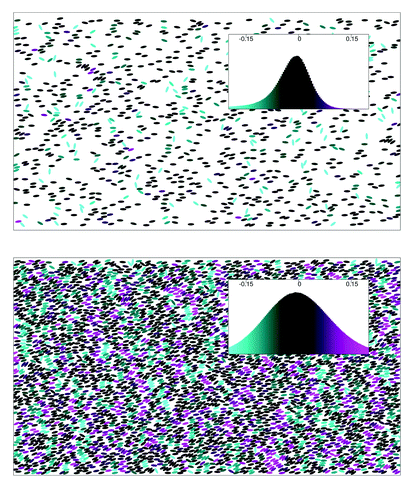
György Tegze1, Frigyes Podmaniczky1, Ellák Somfai, Börzsönyi Tamás, László Gránásy1,2
1Institute for Solid State Physics and Optics, Wigner Research Centre for Physics, P.O. Box 49, Budapest H-1525, Hungary
2BCAST, Brunel University, Uxbridge, Middlesex, UB8 3PH, United Kingdom
Suspensions of neutrally buoyant elliptic particles are modeled in 2D using fully resolved simulations that provide two-way interaction between the particle and the fluid medium. Forces due to particle collisions are represented by a diffuse interface approach that allows the investigation of dense suspensions (up to 47% packing fraction). We focus on the role inertial forces play at low and high particle Reynolds numbers termed low Reynolds number and inertial regimes, respectively. The suspensions are characterized by the orientation distribution function (ODF) that reflects shear induced rotation of the particles at low Reynolds numbers, and nearly stationary (swaying) particles at high Reynolds numbers. In both cases, orientational ordering differs qualitatively from the behavior observed in the Stokesian-regime. The ODF becomes flatter with increasing packing fraction, as opposed to the sharpening previous work predicted in the Stokesian regime. The ODF at low particle concentrations differs significantly for the low Reynolds number and inertial regimes, whereas with increasing packing fraction convergence is observed. For dense suspensions, the particle–particle interactions dominate the particle motion.


